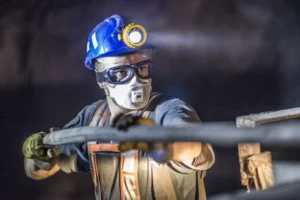Geofizyka Toruń SA of the PGNiG Group is the first company in Europe to employ new seismic data acquisition technologies in searching for hydrocarbon deposits. The company is replacing the hitherto used cabled geophone networks with ultra-lightweight wireless nodal sensors. Their small size and low weight allow to conduct exploration with no harm to the natural environment and local communities.
Seismic surveys are an important part of hydrocarbon exploration. The method is based on controlled initiation of a seismic wave, which reaches deep into the earth, reflects from subsequent layers of rock and arrives back at the surface, where it is recorded with special sensors called geophones. Collected seismic data helps to locate oil and gas deposits within the surveyed area.
A network of geophones spread over an area of up to several hundred square kilometres requires cable connections, transmission equipment and heavy batteries. The equipment needs to be carried by heavy vehicles. In order to minimise environmental impacts and nuisance to local residents, Geofizyka Toruń has implemented an innovative nodal seismic data acquisition system. It is based on an ultra-lightweight, autonomous measuring unit – a node equipped with integrated seismic data logging systems, GPS and efficient batteries durable enough for several weeks of data recording. Devoid of cables, the nodes can be easily hidden under a thin layer of soil and monitored with the use of smartphones. This novel approach, called ‘lightweight seismic surveying’, enables contractors to use more environmentally friendly means of transport.
“Geophysical surveys are always adapted to local environmental conditions, road infrastructure and agricultural activity. It is important that our seismic surveys do not disrupt everyday lives of local residents,” says Piotr Woźniak, President of the Management Board of PGNiG S.A. “The new ultra-light wireless technology and miniaturisation of the entire system allow our geophysicists to minimise the environmental impacts of seismic surveying, while ensuring optimal performance of the assigned geological tasks even in demanding field conditions,” Piotr Woźniak adds.
Geofizyka Toruń is the first company in Europe to use the innovative nodal seismic data acquisition system. So far, the company has carried out ten geophysical surveys using lightweight seismic equipment, most of them in Poland. The new technology makes a perfect solution for locating hot springs, as proven by Geofizyka Toruń’s survey conducted this year in the Netherlands. At present, the company is conducting seismic work in Hungary, and in the autumn of this year it will commence nodal seismic data acquisition in Germany. It will be the largest seismic survey in Europe in terms of the number of nodes deployed and the volume of data recorded.
Wireless seismic surveying technology has been developed for years, but only now has miniaturisation of components reached satisfactory levels. The previously developed solutions were cable-free but still required the use of transmission devices, batteries and geophones. With the new system, the amount of equipment needed to acquire seismic data has been substantially reduced, and it is now easier to obtain landowner consent for conducting geophysical surveys.
Geofizyka Toruń is working with the node manufacturer to advance the new technology so that it optimally matches the needs of customers and the changing global market of geophysical services.
PGNiG








